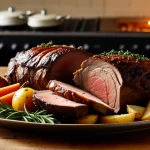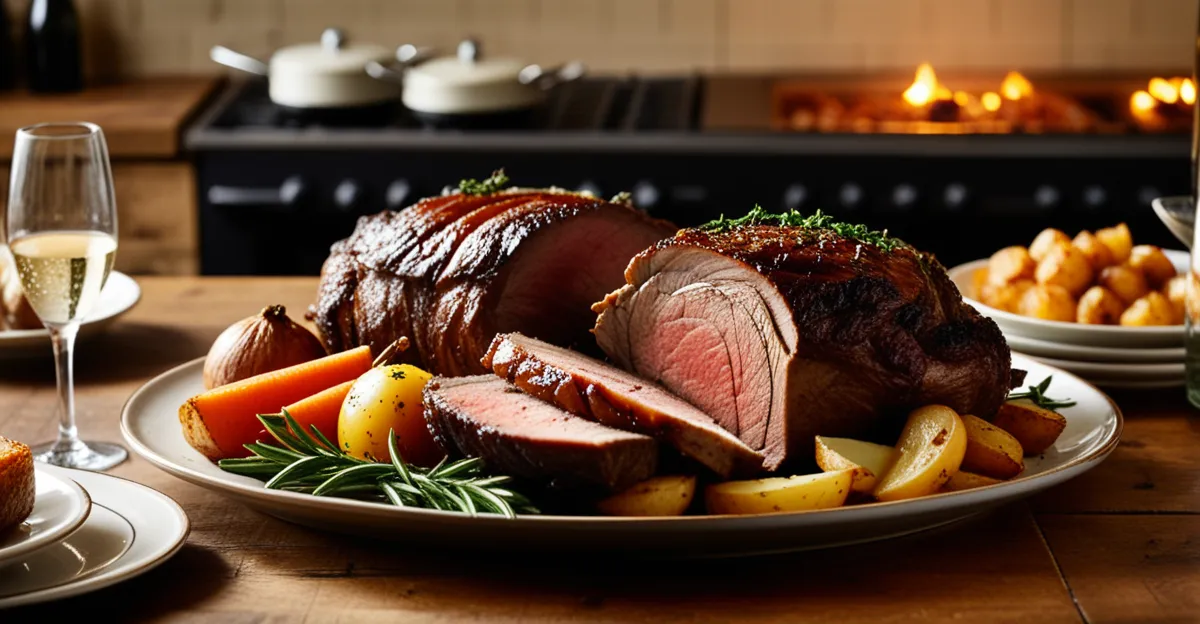Essential Ingredients and Equipment for an Authentic Sunday Roast
Preparing a traditional Sunday roast starts with sourcing quality ingredients and having the right equipment. High-quality meat cuts—such as beef joint, whole chicken, or lamb leg—form the centerpiece. Fresh seasonal vegetables like carrots, parsnips, and potatoes enhance flavour and texture. Don’t forget the essential seasoning basics: sea salt, black pepper, garlic, and fresh herbs like rosemary or thyme.
When it comes to roast dinner equipment, certain kitchen tools are indispensable. A sturdy roasting pan with a rack ensures even cooking and proper air circulation around the meat. Sharp knives help with trimming fat and carving the roast efficiently. Additionally, a meat thermometer is invaluable to check doneness precisely, preventing overcooking.
Also to read : How can you experiment with different ingredients in a traditional Cornish pasty?
Maximizing flavour begins with thoughtful ingredient preparation. For example, parboiling potatoes before roasting makes them crispier. Marinating meat with herbs and garlic can infuse deeper taste. Using a roasting tin with drippings helps accumulate juices, which later enhance gravies. These elements together form the foundation of an authentic and satisfying Sunday roast experience.
Step-by-Step Guide to Roasting the Meats
Roasting meat properly is key to a memorable Sunday roast. For a roast beef recipe, select a high-quality cut like rib or sirloin. Let the meat rest at room temperature before cooking to ensure even roasting. Score the fat lightly and season generously with salt, pepper, and herbs for flavour infusion.
Also read : What Innovative Dishes Can You Create Using Traditional UK Ingredients?
When following roast chicken instructions, start with a whole bird, ensuring it’s dry to promote crisp skin. Stuff with aromatics such as garlic and lemon. Baste periodically with its own juices to maintain moisture. Roast at a moderate temperature—around 190°C (375°F)—until the internal temperature hits 75°C (165°F).
For roast lamb tips, choose a leg or shoulder cut. Marinating lamb with rosemary, garlic, and olive oil enhances the taste. Roast lamb at 180°C (350°F), allowing about 25 minutes per 500g for medium-rare. Use a meat thermometer to avoid dryness by checking for an internal temperature of about 60°C (140°F).
Precise temperature control and resting periods after roasting maximize tenderness and juiciness, ensuring a delicious traditional Sunday roast centerpiece.
Mastering Classic Sunday Roast Side Dishes
Achieving the perfect roast potatoes is central to a traditional Sunday roast. Begin by parboiling peeled potatoes until tender but not falling apart. Then, shake them gently in the pot to fluff edges for crispiness. Roast in hot fat—goose fat or vegetable oil—at around 200°C (400°F) until golden and crisp outside, soft inside.
For classic roast vegetables, select seasonal picks like carrots, parsnips, and Brussels sprouts. Cut evenly to ensure uniform cooking. Toss in olive oil, salt, and pepper before roasting alongside the potatoes, turning occasionally for even caramelisation.
Yorkshire pudding is a must-have with a Sunday roast centerpiece. Use a simple batter of eggs, flour, and milk. Preheat the tin with fat until smoking hot before pouring batter. This step creates light, fluffy Yorkshire puddings with a crisp exterior.
Balancing textures and flavours between crispy potatoes, tender vegetables, and crisp Yorkshire pudding is key. This harmony enhances the roast meat, creating the full traditional Sunday roast experience your guests expect.
Crafting Rich, Homemade Gravy
Making a homemade gravy is essential to complement a traditional Sunday roast, delivering rich, concentrated flavours. The core of a homemade gravy recipe begins with using pan drippings gravy collected from your roast meat. After roasting, pour off excess fat but leave the browned bits and juices in the roasting pan. These bits hold intense flavour and form the gravy’s base.
Next, deglaze the roasting pan by adding stock or wine over medium heat, scraping the bottom to dissolve all caramelised residues. This step releases umami, creating a deep savoury flavour. Slowly whisk in a roux—equal parts butter and flour—to thicken the sauce smoothly without lumps. Stir continuously until the gravy reaches the desired consistency.
If you don’t have time to make gravy from scratch, enhance store-bought sauces simply by whisking in pan juices, fresh herbs, or a splash of wine. Adjust seasoning carefully with salt and pepper to balance flavours.
Perfecting gravy involves patience. Constant stirring and gradual thickening ensure a velvety texture that ties the meat and sides together, elevating the traditional Sunday roast experience indulgently.
Tips for Achieving and Serving a Traditional Sunday Roast at Home
Coordinating roast timing ensures every element reaches the table warm and perfectly cooked. Begin by planning your meat’s resting period; resting not only enhances juiciness but also frees oven space to finish side dishes like roast potatoes and vegetables. For example, once the meat is out, increase oven heat slightly to crisp potatoes without overcooking vegetables.
When it comes to Sunday roast serving tips, presentation plays a vital role. Slice meat against the grain for tenderness, arrange vegetables to showcase their vibrant colours, and nestle Yorkshire puddings alongside. Use warmed plates to keep food hot longer, maintaining the meal’s quality.
Simple shortcuts can help beginners replicate traditional flavours efficiently. Preparing vegetables in advance or using a high-quality store-bought gravy, then enhancing it with pan juices, saves time without sacrificing authenticity. Investing in a meat thermometer guarantees perfect doneness, reducing guesswork.
Combining strategic roast timing with effective plating and practical shortcuts will help recreate the beloved traditional Sunday roast experience at home, bringing both satisfaction and warmth to any gathering.








